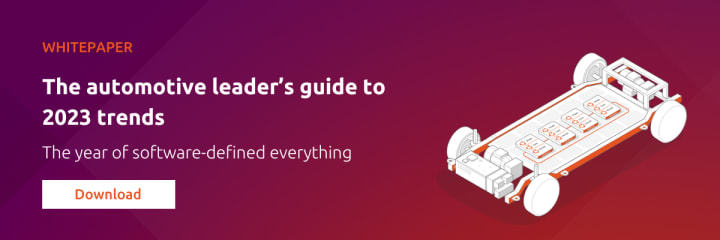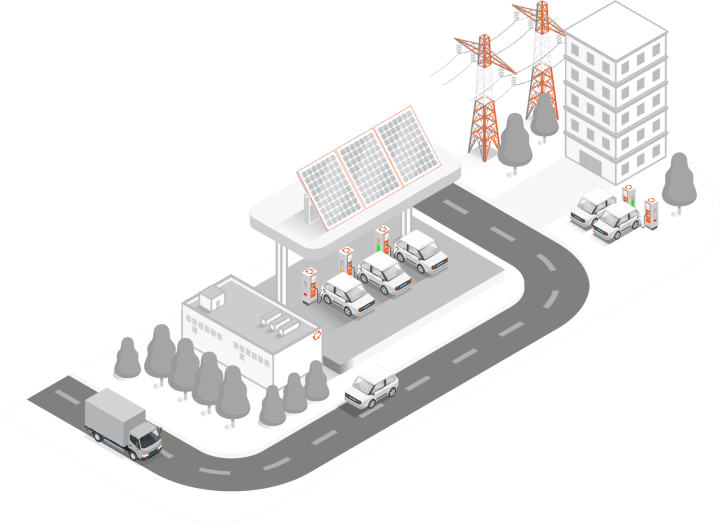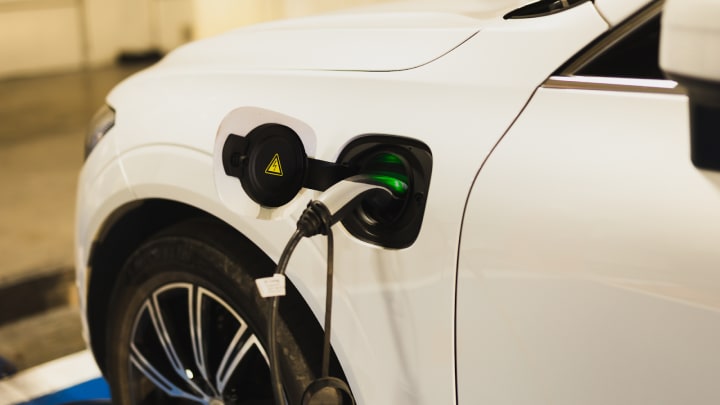When people ask about the negative points preventing higher electric Vehicles (EV) sales, two points are raised systematically: range anxiety and the availability of charging stations. Range anxiety refers to the fear of running out of battery while driving. Of course, with more range or more charging stations, range anxiety decreases. Unfortunately, most countries lack EV charging infrastructure that meets consumer expectations.
This is not only significantly impacting consumers’ decision to move to EVs, it’s also generating a bad user experience for existing EV drivers.
Increasing EV range alone won’t fix the issue; battery charging curves, the complex charging service provider landscape and busy holiday travel weekends generate issues of their own. To complicate matters, as governments worldwide continue to push for investments in EV charging infrastructures, the number of charging stations is expected to increase dramatically in the coming years.
According to the International Energy Agency (IEA), there were more than 2.7 million charging stations globally in 2022. This represents a significant increase of 55% compared to the previous year. The growth is consistent with the trend seen since 2015.
The IEA’s forecasts state that by 2025 we will have 6.7 million charging stations worldwide. And by 2030, considering the estimation that there will be 145 million EVs on our roads, 12.7 million EVSEs will be required. These numbers illustrate the growing demand for charging infrastructures.
A simple look into the complex EV charging infrastructure ecosystem
When looking at the charging landscape, it’s easy to get tangled up in the complexity of the different actors and components. We’ll try to provide a simplified view.
EVSE or charging station
Let’s start with the charging station, which is the stall charger you park next to. This is the tip of the iceberg, and usually the element users interact with either directly or indirectly. In automotive circles, charging stations are most often called Electric Vehicle Supply Equipment (EVSE). But consumers (and sometimes industry insiders) use the term “charging stations” in different ways. For instance, to refer to the socket where you plug your car into, or the location which provides multiple charging stations. We define this location as the charging hub or charging cluster and refer to EVSEs as charging stations.
But consumers (and sometimes industry insiders) use the term “charging stations” in different ways. For instance, to refer to the socket where you plug your car into, or the location which provides multiple charging stations. We define this location as the charging hub or charging cluster and refer to EVSEs as charging stations.
CPO
EVSEs are handled by Charging Point Operators (CPOs). CPOs not only manage and maintain the charging stations, most of them also provide connectivity and offer their services to OEMs and service providers.
eMSP
Electric Mobility Service Providers (eMSPs) aim to simplify charging station access to users. Are you still following? Let’s add some complexity: some CPOs are also eMSPs, and eMSPs usually interface with multiple CPOs. For example, a CPO, wearing an eMSP hat, can handle charging schemes and pricing models.
As you can see, the landscape is pretty complex, and as a user, it’s usually mandatory to have multiple eMSP accounts or cards in order to ensure that they can connect to the charging station on their trip.
Standards
Now that we have a better view on the players involved, let’s highlight the key standards at hand.
Although we won’t focus on the different standards of plugs, cables and outlets, when it comes to the link between the vehicle and the EVSE, the ISO 15118 standard is worthy of mention. ISO 15118 enables “Plug & Charge” features: the user just plugs in their vehicle, and the charge begins. At the end of the charging session, the user will be billed the right amount.
A lot of operations happen behind the scenes. Indeed, there is tons of data transferred between EVSEs and CPOs. This step is critical because it ensures communication between the charging station and the charging infrastructure. CPOs follow the Open Charge Point Protocol (OCPP) to connect to EVSEs. OCPP provides a set of guidelines that enables interoperability, which facilitates the use of different EVSE brands and models on different charging networks.
Although OCPP focuses on the communication itself and allows remote management of the charging station, it also enables the transmission of interesting information like availability status, the consumption, and error alerts.
eMSPs interface with CPOs, and usually use the Open Charge Point Interface standard (OCPI). OCPI is the continuity of OCPP in the sense that it provides specifications for the exchanges between the operators and the service providers.
There is a focus on the messages themselves, on authentication, authorisations and consumption monitoring. OCPI can be seen as providing certain Application Programming Interfaces (APIs) which can enable payment, and communication with the operators.
These standards ensure the communication between the different components of the EV charging chain and help accelerate the deployment of charging infrastructures.
How embracing open source software can speed up EV infrastructure development
As we’ve seen above, the EV charging infrastructure landscape is complex. With multiple standards to consider, it is clearly difficult for manufacturers, operators and users to keep track of how the charging stations work.
But it’s not just the diversity of stakeholders and the physical infrastructure assets that complicate the picture. With more charging stations come more software maintenance and interoperability hurdles too.
We believe that open source software can simplify the whole process, including the operation and maintenance phases of the lifecycle.
Indeed, open source can help companies not only reduce costs, but also develop more quickly than when using proprietary software. Moreover, in order to ensure that charging networks can spread smoothly, with more companies using open source and enabling collaboration, the development becomes more efficient and shared standards can be adopted more broadly. In the section below, we will explore some examples of open source software that can benefit EV charging players.
At Canonical, we provide software solutions from cloud backends to embedded devices. In this post, we wanted to focus on the embedded offering that can help speed up the EVSE development process and its maintenance.
Efficient charging stations require a secure operating system
Charging operators want to ensure their EVSEs run an efficient operating system (OS) capable of handling different functions seamlessly, while ensuring the charging station itself remains secure at all times.
An embedded Linux like Ubuntu Core, which is both lightweight and extremely secure, makes it easy to deploy and operate charging stations. By implementing Ubuntu Core in an EVSE, charging operators can benefit from regular over-the-air (OTA) security updates.
Simplifying EVSE operations with Kubernetes clusters
EVSEs need to run complex operations while making sure the device’s resources are optimised from a performance and consumption point of view. One of the suitable approaches involves using Kubernetes containers. But how would one orchestrate Kubernetes clusters efficiently on charging stations? The chosen tool has to answer these crucial requirements.
MicroK8s is a lightweight container orchestration platform, designed to be easy-to-use. By running MicroK8s on EVSEs, securing charging sessions becomes easier, as it is possible to use dedicated containers or clusters for handling charging sessions. With specific add-ons, station clusters can be effortlessly monitored and potential EVSE issues can be automatically detected.
Unlocking effortless EVSE management
From a CPO perspective, the more EVSEs to operate, the more challenging it becomes to manage them. Considering the potential user complaints in case of malfunction, it is vital for operators to monitor hundreds or even thousands of charging stations remotely, as they are spread across different locations in multiple countries and often across different cloud providers.
With the right tools, multi-cloud operations allow for simplified data sharing between EVSEs and CPOs. OpenStack provides cost-effective multi-cloud solutions thanks to a flexible approach that allows your company to automatically adjust resources based on demand, while enabling product interoperability in a secure and scalable way.
Building the path to smoother EV charging infrastructure
In this blog post, we’ve highlighted some of the challenges that OEMs and users are facing when it comes to electric vehicle charging infrastructure. We believe that smarter charging solutions, from more secure and connected charging stations to more open charging operator and service provider backends, will lead to a greener future.
Open source software can speed up the development of charging station infrastructure, especially when it’s backed up with expert security and support. This will help simplify and improve the user experience.
In the coming weeks and months, we’ll be digging deeper into the fascinating world of EV charging infrastructure, so be sure to stay tuned for upcoming EV-related content.

- Contact Us
- Check out our webpage
- Want to learn more about Software Defined Vehicles? Download our guide!





